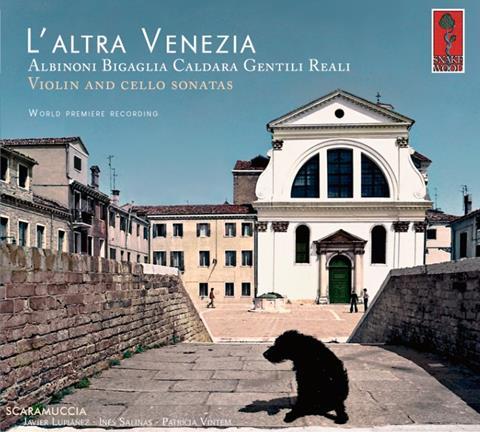An intriguing Albinoni discovery, but variable performances

The Strad Issue: August 2023
Description: An intriguing Albinoni discovery, but variable performances
Musicians: Scaramuccia
Works: Bigaglia: ‘Dresden’ Sonata no.2 in C major for violin and continuo. Caldara: Sonata in F major for violin and continuo. Albinoni: Sonatas in B flat major and G minor for violin and continuo. Gentili: Sonatas in A major and G major for cello and continuo; Capriccio da camera in B minor for violin and cello or harpsichord op.3 no.11. Reali: Sonata da camera in B flat major for violin and continuo op.2 no.7
Catalogue number: SNAKEWOOD EDITIONS SKU SCD202301
Scaramuccia explores the experimental outputs of some of the more gifted of Vivaldi’s contemporaries who were active in Venice around 1700. Of particular interest are the two violin sonatas by Albinoni, recently discovered by Michael Talbot in Vienna’s Este Collection but performed here with mixed outcomes.
Violinist Javier Lupiáñez dispatches the earlier G minor Sonata with style, virtuosity and verve, but his intonation lapses occasionally in the B flat major Sonata and, given his research specialism, he is inordinately liberal with extempore ornamentation in the opening Adagio and giga-like finale, disfiguring the melodic line and misrepresenting each movement’s character. A similar criticism applies to the opening Largo of Caldara’s F major Sonata, otherwise dispatched with sensitivity and élan, and most movements of Bigaglia’s Sonata in C major; the latter’s Siciliana, for example, seems bereft of its customary pastoral calm.
Review: Albinoni: Sinfonie a cinque op.2
Review: Venice by Night. Works by Albinoni, Lotti, Pollarolo, Porta, Veracini & Vivaldi
Cellist Inés Salinas joins Lupiáñez as a soloist in a more level-headed performance of Gentili’s Capriccio op.3 no.11. She also gives cautious, workmanlike accounts of Gentili’s only two cello sonatas, the frequent low-register passagework of which engenders problems of articulation and tonal clarity, particularly in the A major Sonata’s central Allegro. Patrícia Vintém provides supportive harpsichord accompaniment throughout. The close recording reproduces the timbres of gut strings with revealing fidelity.
ROBIN STOWELL











































No comments yet